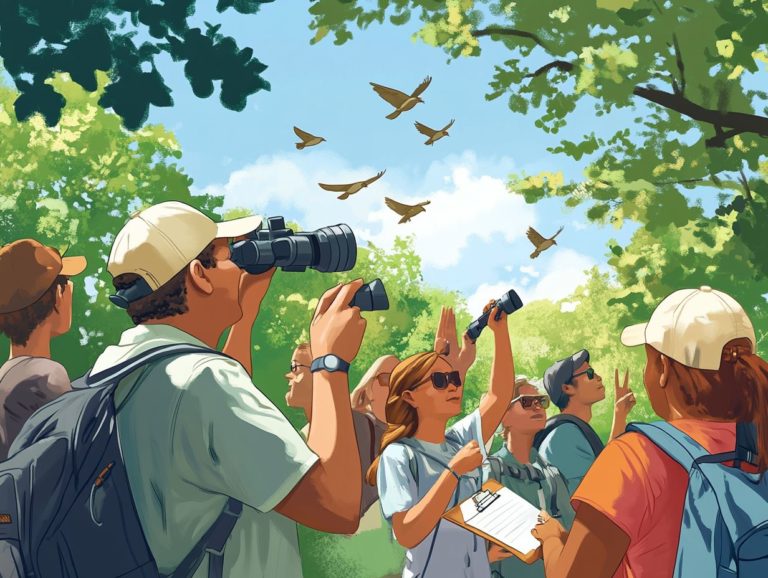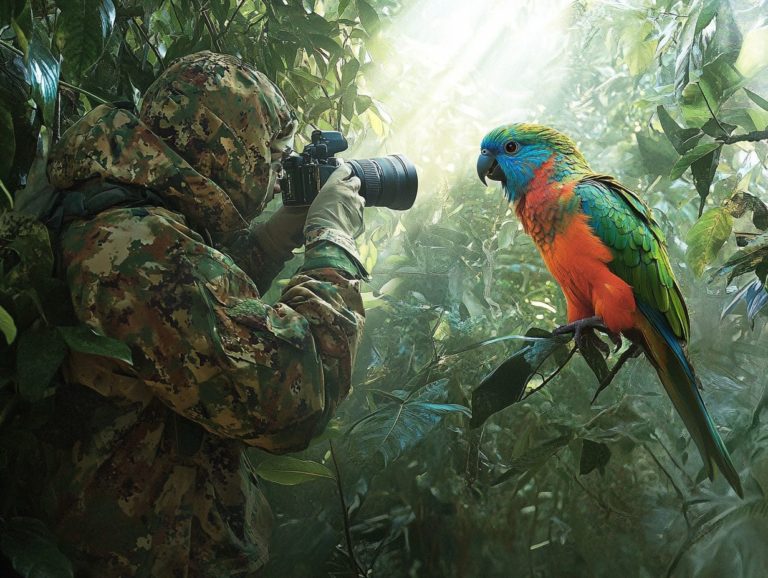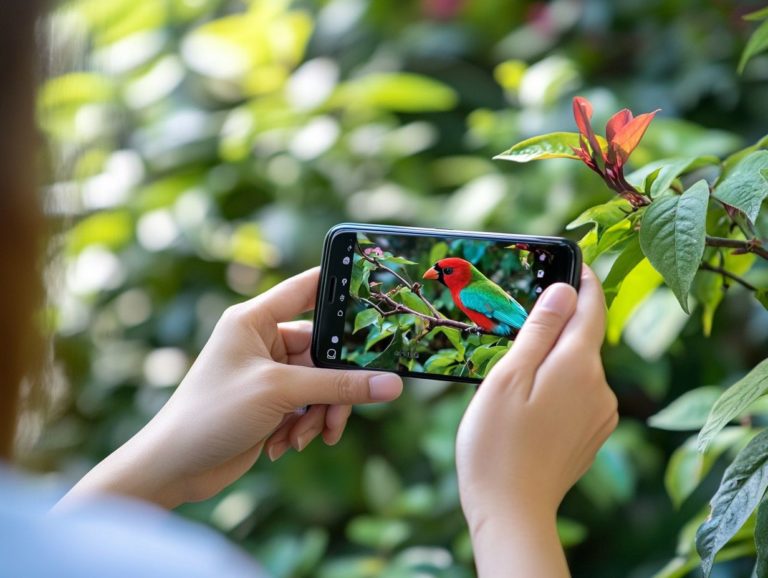How to Attract Birds to My Garden?
Attracting birds to your garden can transform it into a vibrant oasis, enhancing both its beauty and increasing property values, while also benefiting ecological health.
This guide delves into the numerous benefits of welcoming feathered friends, from aiding in flower pollination to providing natural pest control. You will discover the essential elements for creating a bird-friendly environment, learn about the types of birds you can attract, and uncover the best foods and feeders to entice them.
With practical tips on landscape design, planting strategies, and predator management, you ll be well-equipped to turn your garden into a true sanctuary for birds.
Contents
- Key Takeaways:
- Why Attracting Birds is Beneficial
- Creating a Bird-Friendly Environment
- Types of Birds to Attract
- Providing Food and Water for Birds
- Other Tips for Attracting Birds
- Frequently Asked Questions
- What are some ways to attract birds to my garden?
- How can I make my garden more inviting to birds?
- What types of plants should I include in my garden to attract birds?
- How often should I refill my bird feeders?
- What are some common mistakes people make when trying to attract birds?
- How can I keep squirrels and other animals from eating all the bird food?
Key Takeaways:
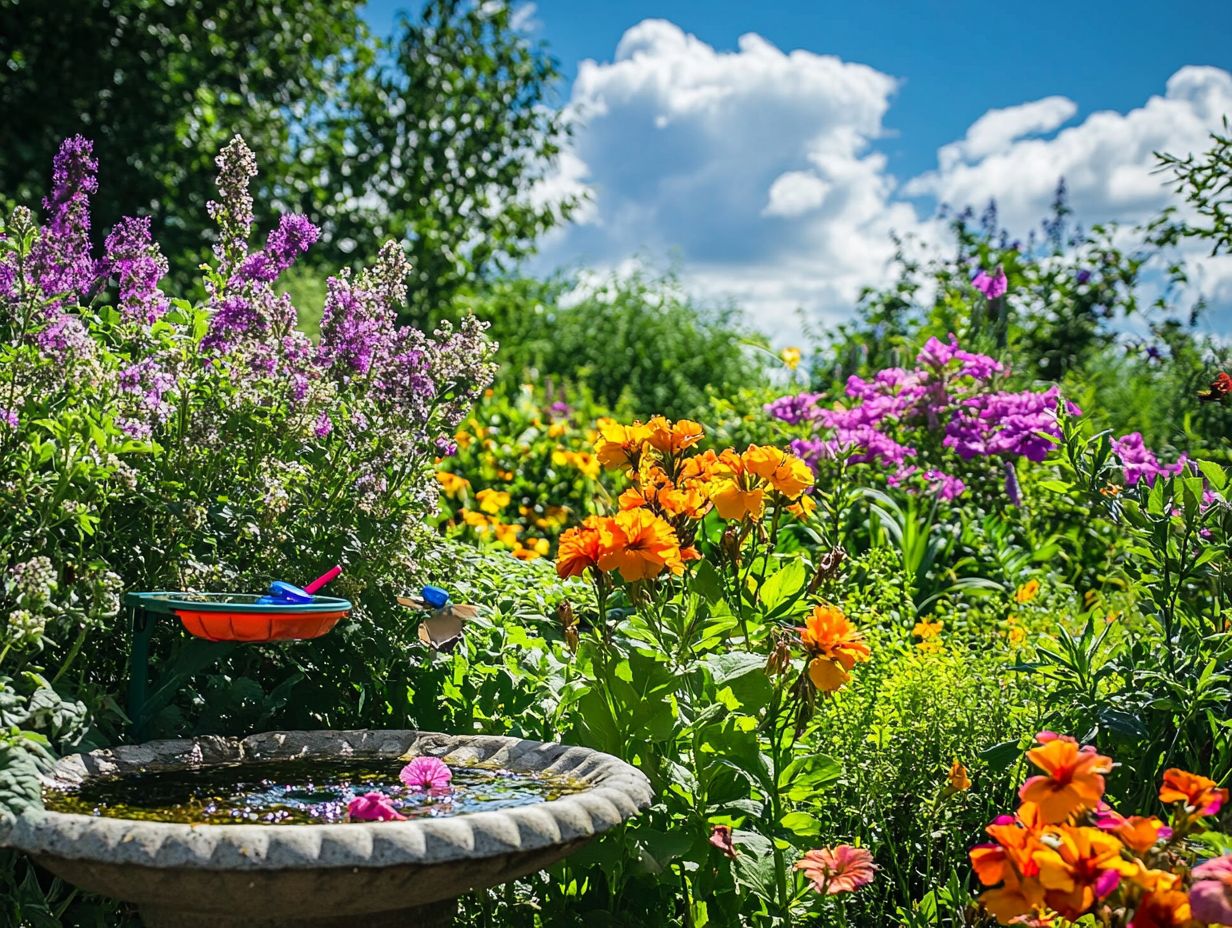
- Attracting birds to your garden has many benefits for both your garden and the environment.
- Creating a bird-friendly environment with essential elements such as food sources, water sources, and shelter is crucial for attracting birds.
- Knowing the preferences of common bird species and providing the right food and feeders will help attract a variety of birds to your garden.
Why Attracting Birds is Beneficial
Attracting birds to your backyard is not just a charming pastime; it brings a wealth of advantages for your garden and the local ecosystem. By cultivating a vibrant habitat, you ll invite a diverse cast of backyard birds that enhance pest control, assist in flower pollination, and manage weeds, all while elevating the aesthetic and value of your property.
The delightful presence of these feathered guests can provide a soothing escape from daily stresses and encourage a commitment to environmental and wildlife conservation. This transformation can turn your yard into a sanctuary for biodiversity and ecological vitality.
Benefits for Your Garden and the Environment
Attracting birds to your garden offers benefits that go far beyond mere enjoyment; they serve as helpful partners in pest control, flower pollination, and weed management.
Consider species like wrens and robins. These birds are invaluable in keeping pests at bay by feasting on harmful insects that threaten your plants.
Meanwhile, hummingbirds and other nectar-loving birds play a vital role in pollination, transferring pollen from flower to flower, which boosts fruit production and enhances plant diversity.
Additionally, some seed-eating birds contribute to weed control by munching on seeds, helping to prevent unwanted growth in your garden. Together, these avian activities not only create a thriving garden but also promote the overall health and stability of the local ecosystem, fostering a balanced environment that supports both plant and animal life.
Creating a Bird-Friendly Environment
You can easily create a bird-friendly environment in your backyard with some thoughtful planning and the right plants. By choosing native flora, you can offer essential food sources, nesting sites, and water sources, transforming your outdoor space into a haven for backyard birds.
Essential Elements for Attracting Birds

To attract a delightful array of birds, you must provide essential elements such as bird feeders, nesting sites, and a reliable water source filled with clean water. For more tips, check out this guide on how to attract rare birds with feeders.
Bird feeders come in various styles tube feeders, platform feeders, and suet feeders each tailored to meet the unique feeding preferences of different species. Selecting the right nesting sites is equally important; consider installing birdhouses or allowing cavity trees trees with holes that birds can use to nest in to remain, as these natural habitats can encourage nesting.
A clean water source, like birdbaths or soothing water fountains, is vital not only for drinking but also for bathing. By offering these key elements, you’ll create a harmonious environment that promotes bird health, invites their presence, and fosters a vibrant ecosystem right in your backyard.
Types of Birds to Attract
Understanding the types of birds you wish to attract is essential for enhancing your backyard. Common backyard birds vary widely in species and preferences, so it s important to offer the right food sources to appeal to this diverse wildlife.
Common Species and Their Preferences
Common species of backyard birds, like finches, sparrows, and cardinals, each have their own unique tastes when it comes to food sources, including the delightful fruits of summer and fall.
These birds display fascinating seasonal behaviors that shift with the changing environment. You may notice that finches delight in a seed-rich diet during the chillier months, while sparrows take to foraging for insects come summer and fall. Cardinals, in contrast, are often seen flocking to feeders more frequently in winter, seeking out high-energy foods like sunflower seeds to keep their energy levels up.
By understanding these dietary patterns, you can elevate your backyard birdwatching experience and create a bird-friendly habitat that caters to the diverse needs of these vibrant creatures throughout the year.
Providing Food and Water for Birds
Providing food and water for birds is essential for their survival and overall well-being, and for maintaining a healthy ecosystem. You can achieve this by using bird feeders filled with high-quality foods and ensuring a reliable source of clean water.
Best Foods and Feeders for Attracting Birds

Selecting the right foods and bird feeders is essential for attracting and retaining a delightful variety of birds in your backyard.
By understanding the diverse feeding preferences of these avian visitors, you can significantly enhance your experience as a birdwatcher. For example, suet feeders particularly popular among woodpeckers and nuthatches offer a rich energy source during the colder months. Tube feeders are excellent for dispensing seeds like sunflower and safflower, which are highly appealing to finches and sparrows.
Don t overlook platform feeders, either; they accommodate a broader range of food options, including fruits and nuts, attracting species from cardinals to jays, and facilitating food sharing among various birds.
Exploring these options not only benefits the birds but also elevates the charm of your garden, creating a lively and inviting atmosphere.
Other Tips for Attracting Birds
Enhancing your backyard’s appeal to birds can be achieved through thoughtful planting strategies, the installation of nesting boxes, and effective methods for managing predators and pests.
Planting Strategies and Nesting Boxes
Implementing effective planting strategies and providing the right nesting boxes can greatly boost your chances of attracting a delightful array of backyard birds.
By integrating a diverse selection of native plants, you can craft a habitat that truly supports local avian species and promotes wildlife conservation. These plants not only serve as important food sources, offering seeds and berries, but they also provide essential shelter for nesting and foraging.
For example, consider planting native shrubs like serviceberry or elderberry; they deliver both food and protective cover. Adding thoughtfully placed nesting boxes can further enhance your outdoor space, allowing birds to raise their young in a secure environment.
When designed specifically for certain species, these boxes can significantly promote successful breeding and contribute to a harmonious ecosystem right in your yard, enhancing wildlife.
Start feeding birds today to watch your backyard come alive!
Dealing with Predators and Pests
Attracting birds to your backyard involves more than just providing food and shelter; it also requires knowledge on how to create a bird-friendly backyard to protect them from predators and pests.
Use a protective strategy to keep your feathered visitors safe. Installing birdhouses can serve as secure nesting options while deterring unwanted animals.
Planting native plants creates a natural barrier and hosts beneficial creatures like ladybugs and lacewings that help control harmful insects.
Equip your bird feeders with barriers to keep larger animals away. This ensures your feathered friends can dine in peace!
Engage in community awareness campaigns about safe outdoor practices. This will strengthen the protective habitat for these beautiful creatures.
Frequently Asked Questions
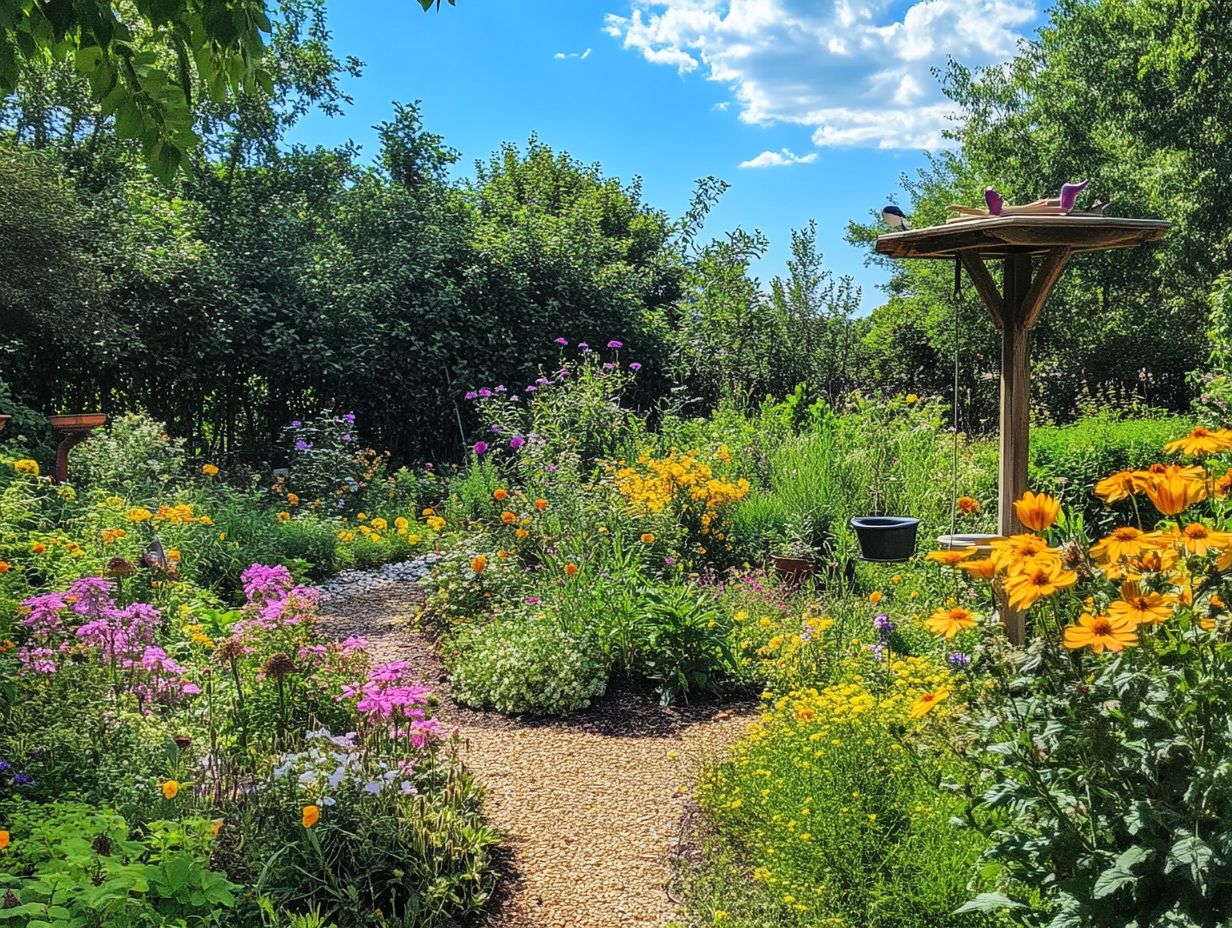
What are some ways to attract birds to my garden?
You can attract birds by providing a water source, offering various bird feeders, planting native plants, and creating a bird bath for shelter.
How can I make my garden more inviting to birds?
Add birdhouses or nesting boxes, incorporate different textures and heights, and avoid pesticides.
What types of plants should I include in my garden to attract birds?
Include summer-fruiting and fall-fruiting plants, seeds, and nectar-producing flowers. Native plants offer food and shelter for local bird species.
How often should I refill my bird feeders?
Refill your bird feeders every 2-3 days, especially during colder months when food is scarce.
What are some common mistakes people make when trying to attract birds?
Avoid using non-native plants, neglecting water sources, and failing to clean bird feeders. Chemicals in the garden can also harm birds.
How can I keep squirrels and other animals from eating all the bird food?
Use squirrel-proof feeders and place them away from trees. Consider providing a separate feeder with squirrel-friendly food to distract them.



